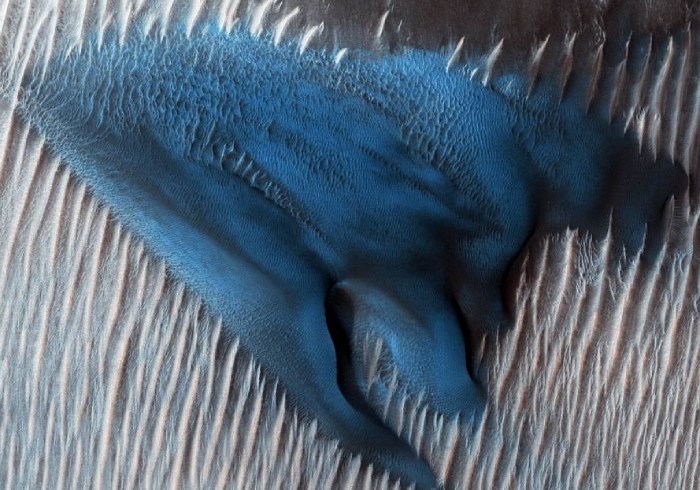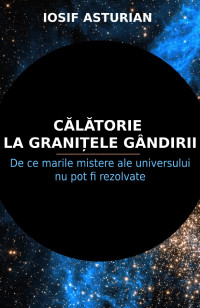
Dune de nisip cu nuanţe albastre surprinse de o sondă spaţială NASA pe planeta Marte în ianuarie 2018.
Clic pe imagine pentru o rezoluție mai bună
1. O primă sămânţă de bumbac a încolţit pe lună
[Cercetători chinezi au obţinut încolţirea primei seminţe de bumbac pe Lună, un succes al unuia dintre experimentele sondei Chang'e 4, care a aselenizat recent pe faţa ascunsă a satelitului, stabilind astfel o premieră. Temperaturile de pe suprafaţa solului lunar pot depăşi 100 de grade Celsius ziua şi coborî la minus 100 de grade noaptea. Cercetătorii chinezi au proiectat un recipient care ar menţine o temperatură cuprinsă între 1 şi 30 de grade şi permite intrarea luminii naturale şi alimentarea plantelor cu apă şi nutrienţi.]
2. You can’t characterize human nature if studies overlook 85 percent of people on Earth
[The vast majority of what we know about human psychology and behavior comes from studies conducted with a narrow slice of humanity – college students, middle-class respondents living near universities and highly educated residents of wealthy, industrialized and democratic nations.]
3. How our unconscious visual biases change the way we perceive objects
[The process of visual perception is a best guess scenario. When we look at something, the brain uses visual cues –sensory signals that convey information – to help work out what that thing is. This means that our perception of the world is not a simple reflection of sensory information, it is an interpretation of it.]
4. Proper Breathing Brings Better Health
[Stress reduction, insomnia prevention, emotion control, improved attention—certain breathing techniques can make life better.]
5. The Imprinted Brain Theory in a Thousand Words
[According to the imprinted brain theory, paternal genes make for a baby with a larger brain and tendencies to make more demands on the mother—something which at the extreme is diagnosed as autism. Maternal genes, however, work the opposite way: making for a smaller, more tractable baby—something which at the limit will eventually be diagnosed as psychosis.]
6. The magnetic north pole is messing with your smartphone’s mapping apps
[The magnetic north pole is wandering away from the Canadian Arctic toward Siberia, and much faster than expected. It’s sped up from about 15 kilometers (9.3 miles) to around 55 kilometers (34 miles) per year, according to Nature. The magnetic north pole is influenced by the movement of liquid iron below Earth’s surface. The World Magnetic Model, which provides a five-year forecast of the planet’s magnetic field, was last set in 2015 and due to be updated in 2020, but these rapid movements mean it’ll have to be updated this year.]
7. VO₂max: the gold standard for measuring fitness explained
[If you could pick one measure to evaluate your health, what would you pick? Blood pressure? Cholesterol? These are commonly measured by your GP, but there is something that is more informative: maximal aerobic capacity, otherwise known as VO₂max.
This measure tells you your maximum (max) rate (V) of oxygen (O₂) uptake and use during exercise. The greater this is, the better your health. In fact, VO₂max is the best predictor of your risk, at a given point in time, of getting chronic diseases like heart disease, type 2 diabetes or certain cancers, and the best predictor of your chances of living a long and healthy life. Intuitively, this does not make much sense: most people go through life without ever needing to reach their VO₂max.]
8. Guide: How to find and use satellite images
[Here is a short guide covering some of the most frequently asked questions and giving some general explanations on satellite images.]
∗∗∗
Bonus:
Cum limbajul transformă ceea ce gândim | Lera Boroditsky
